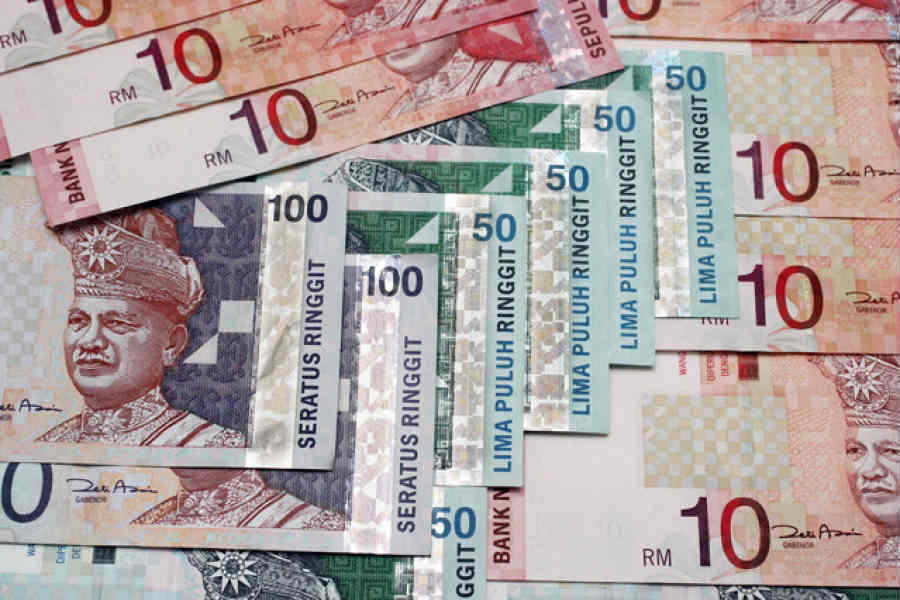KUALA LUMPUR, Dec 27 —The ringgit swung like a yo-yo in 2023, but the country’s strong economic fundamentals and improving economy helped support the local currency from weakening further against the US dollar.
At the start of the year, the ringgit had performed promisingly, riding on the optimistic view of economic reopening post-Covid-19 amid the anticipation of a less aggressive US interest rate hike cycle.
However, as the months passed by, the local currency succumbed to the continuous US monetary tightening and as the year came to an end, the local currency slipped 5.4 per cent versus the greenback to close at RM4.6340 on December 26, from its first closing level of the year at RM4.3965 per US dollar on January 3, 2023.
The ringgit reached its highest level this year at RM4.229 on February 2 before steadily falling 11.96 per cent to RM4.735 per US dollar on October 19, the weakest closing level since 1998.
The ringgit’s weakness, however, does not reflect economic fundamentals as Bank Negara Malaysia (BNM) has made it clear that the underperformance of the ringgit comes from external factors outside the control of Malaysian policymakers.
Among the major external factors causing the ringgit’s slide are aggressive interest hikes by the US Federal Reserve (Fed) in a bid to combat inflation, a weaker-than-expected Chinese economic performance and the easing of monetary policy by the People’s Bank of China.
Governor Datuk Abdul Rasheed Ghaffour noted that other regional currencies also depreciated against the greenback, primarily due to the US monetary policy path and concerns about China’s economic outlook.

Performance of ringgit in 2023
Bank Muamalat Malaysia Bhd chief economist Mohd Afzanizam Abdul Rashid noted that the Fed delivered a 525-basis point increase in the Federal Funds Rate (FFR) from March 2022 to July 2023.
Since then, the Fed has been keeping the FFR unchanged at 5.50 per cent. The wide interest rate differentials between Malaysia’s overnight policy rate (OPR) and the FFR have led to the ringgit weakening, he said.
Against this backdrop, the ringgit continued to exhibit two-way movements with an overall marginal appreciation of 0.1 per cent against the US dollar during the first quarter.
However, the ringgit depreciated by 5.8 per cent in the second quarter of 2023 (2Q 2023) as global developments continued to be the dominant factor in driving domestic financial conditions during the quarter.
BNM said in the second quarter, market sentiments were dampened by concerns over a slower global economic outlook and a weaker-than-expected rebound in China’s economy.
In the third quarter, exchange rate developments were pressured by domestic financial conditions, driven mainly by evolving expectations on the global monetary policy path.
In particular, the strength of the US job market prompted expectations for a higher-for-longer policy stance by the Fed and subsequently higher global interest rates.
The US dollar appreciation extended into the quarter, and the ringgit ended up depreciating by 0.2 per cent, alongside other regional currencies.
In the fourth quarter, BNM stated that encouraging global developments and greater domestic political certainty after one year of the Unity Government led to a stronger ringgit against the US dollar.
The ringgit ended the quarter stronger, jumping 5.3 per cent against the greenback.
Similarly, the ringgit also strengthened against the currencies of several major trading partners with its nominal effective exchange rate appreciating by 0.4 per cent in the fourth quarter.
Ringgit versus Asean currencies
The ringgit, which was once at par with the Singapore dollar, has sunk and reached a new low of RM3.52 to one Singapore dollar in December. On the first day of the year’s trading (January 3), the ringgit traded at RM3.227 per Singapore dollar.
However, as of December 26, it was traded at 3.5000 versus the Singapore dollar.
The local currency recorded its first trading close this year against the Japanese yen at RM3.365 before closing higher at RM3.2517 on December 26.
The local note witnessed a mixed performance against a basket of Asean currencies throughout the year.
It moved between 290.1 and 299.2 against the Indonesia rupiah, 8.00 to 8.37 against the Philippine peso and between 3.365 and 3.2517 against the Japanese yen.
“If we look at foreign ownership in equities and bonds, the ringgit and other Asian currencies are low by historical standards,” said Mohd Afzanizam.

BNM intervention cushions ringgit’s fall
While the ringgit continues to be affected by global developments, Malaysia’s expected economic growth in the range of 4.0 to 5.0 per cent, as well as the structural reforms and fiscal consolidation efforts by the government, are supporting factors for the ringgit.
As per its statutory mandate, Abdul Rasheed assured that BNM will do whatever is necessary to ensure the ringgit continues to adjust in an orderly manner and several market measures will be deployed to boost the ringgit if needed.
He stressed that while the ringgit’s level versus the US dollar had touched the Asian financial crisis level, the country is not in a crisis, based on its strong fundamentals reflected by its economic growth and well-capitalised banking system, among others.
Malaysia has a solid banking system, a robust financial market, and business-friendly government policies to entice investors, all of which will provide more support for the ringgit, he added.
Anwar’s de-dollarisation strategy
Prime Minister Datuk Seri Anwar Ibrahim has launched several national policies as part of his Madani Economy, including the National Energy Transition Roadmap (NETR) and the New Industrial Master Plan 2030 (NIMP 2030) to help attract investments and strengthen the value of the ringgit.
He said Malaysia will increase trading in local currency, reduce reliance on the US dollar, and be more active and aggressive in the use of local currency, as part of plans to de-dollarise.
Malaysia has signed an agreement with four Asean countries – Indonesia, Malaysia, Thailand, and Philippines – to use local currencies in bilateral trade transactions.
The latest deal was with China, its largest trading partner, as both countries encouraged more trade and investments in the ringgit, which saw about 25 per cent, or RM39.2 billion of Malaysia’s bilateral trade with China transacted using the ringgit and renminbi.
“Most of the world’s currencies have experienced depreciation for the year 2023, including the ringgit, because of the actions of the Fed which raised the interest rate.
“By only strengthening the local economy can we increase the value of the ringgit and we take the approach of not increasing the OPR (while considering) the increase in the value of the US dollar,” he said.
Ringgit outlook in 2024
Despite the uncertain ringgit performance in 2023, the local note has remained resilient as the country wraps up the year.
Minister of Economy Rafizi Ramli recently reportedly said that the local currency is expected to strengthen in 2024, driven by several factors, including the government’s fiscal discipline, better global economic growth and a clearer US interest rate outlook.
“The ringgit’s performance has to be viewed from a broader perspective and measured against other currencies and not solely against the US dollar.
“This how central banks around the world measure the value of their currency, which is a comparison against a group of other major currencies that trade with that country,” he said.
Rafizi said the value of a currency has to be measured against other economic indicators, such as economic growth, inflation rate, amount of new investment, interest rate, unemployment rate and salary scale, among others.
He noted that the Malaysian economy grew at a good momentum for three consecutive quarters with the lowest inflation rate since 2021.
Meanwhile, Mohd Afzanizam said the ringgit’s performance will greatly depend on when the Fed would cut the FFR, as well as how low and how fast it can go in cutting rates.
The other factors are political stability and domestic policies, where the resolve to enact reforms and a stable government should help drive the ringgit higher in 2024, said Mohd Afzanizam.
“As of now, we are projecting the local note to reach RM4.50 versus the US dollar by the end of 2024,” he said.
— Bernama





